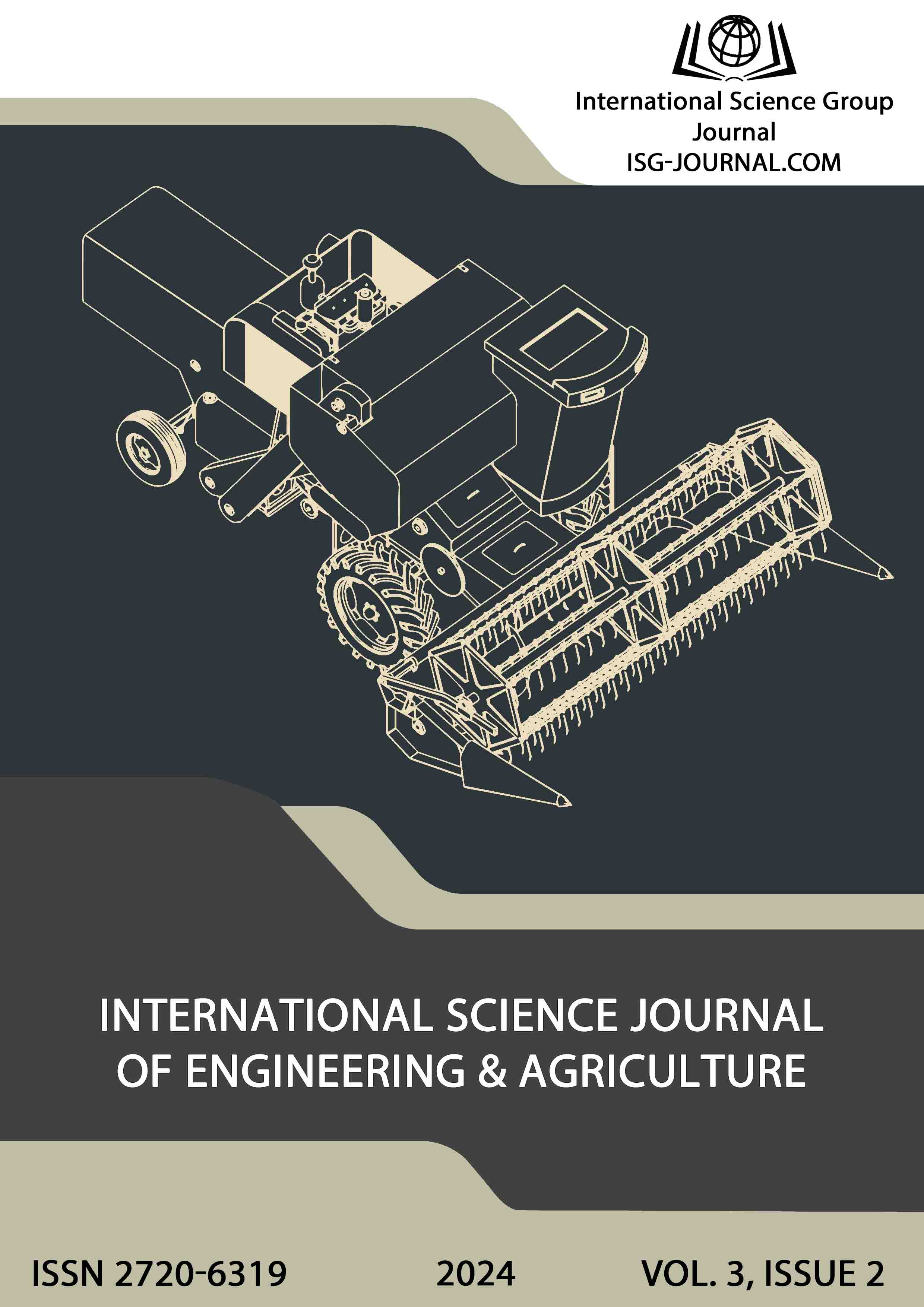Determination of the value of the welding and heating pulses of the current during the restoration of the clutch cams
DOI:
https://doi.org/10.46299/j.isjea.20240302.07Keywords:
cam couplings, recovery, electric contact welding, welding current pulse, heating current pulse, formingAbstract
Currently used surfacing methods for restoring cams have a significant labor-intensive mechanical processing, a large consumption of filler material and low indicators of the strength of the restored reliefs. The purpose of the work is to improve the quality of welding filler material and form-forming deposition due to effective means of heat concentration in the body of the restored relief based on the calculation of process parameters. The most promising way to restore the clutch cams is to weld filler material to the top of the cam with a simultaneous molding of the profile. During processing, the additive material is placed on the outer surface of the relief and welded by the electric contact method. To improve the quality of filler material welding, reduce electrode wear, and optimize the cam forming process, the first welding current pulse provides welding of the material to the top of the cam and is partially used in the initial deformation period, and the second welding pulse determines the completion of the forming process with simultaneous deposition. Taking into account the analogy of the processes of heat generation during electric contact welding, as the basis of the proposed method of calculating the welding and heating current pulses during the restoration of electric contact welding with a simultaneous forming deposit, the method of calculating the value of the welding current based on the heat balance equation of O.S. Helman. The method of calculating the main parameters of the mode of recovery of the clutch cams by electrocontact welding of the fit material with simultaneous forming deposit based on the heat balance equation is described. The given results are in good agreement with the current values of the welding and heating pulses of the current obtained in the process of experimental restoration of the parts and allow them to be used to calculate the temperature fields in the body of the part.References
Тихонов, А.В. (1985) Восстановление кулачков муфты блокировки дифференциала трактора МТЗ -50. Сб. науч. тр. МИИСП: Технология повышения долговечности восстанавливаемых деталей, 85-88.
Пилипенко, Н.С., Тихонов, А.В., Цехмистер, И.М. (1984) Двухимпульсный режим контактной сварки при восстановлении деталей с рельефной поверхностью. Сб.науч.тр. МИИСП: Прогрессивные технологические способы и процессы восстановления деталей сельскохозяйственной техники, 42-46.
Гельман, А.С. (1960) Технология и оборудование контактной электросварки. М.: Машгиз, 367.
Орлова, Б.Д. (1975) Технология и оборудование контактной сварки. М.: Машиностроение, 536.
Орлова, Б.Д. (1986) Технология и оборудование контактной сварки. М.: Машиностроение, 352.
Гуляев, А.И. (1978) Технология точечной и рельефной сварки сталей. М.: Машиностроение, 246.
Козлов И.К. (2013) Область применения и оптимизация технологии рельефной Т-образной сварки. Фундаментальные исследования, № 11-5, 875-879.
Болгарский, А.В., Мухачев, Г.А., Щукин, В.К. (1975) Термодинамика и теплопередача. М.: Высшая школа, 495.
Катаев, Р.Ф., Милютин, В.С., Близник, М.Г. (2015) Теория и технология контактной сварки. Екатеринбург: Изд-во Урал. ун-та, 144.
Архипов, О.Г., Горбатенко, Ю.П., Мариношенко, О.П., Галабурда, Н.І. (2021) Муфти. Київ: КПІ ім. Ігоря Сікорського, 204. Available at: https://ela.kpi.ua/bitstream/123456789/45679/1/Mufty_2021.pdf
Губкин, С.И. (1960) Пластическая деформация металлов. Том 2. М.: Металлургиздат, 381.
Унксова, Е.П., Овчинникова, А.Г. (Ред.) (1983) Теория пластических деформаций металлов. М.: Машиностроение, 598.
Шофман, Л.А. (1961) Основы расчета процессов штамповки и прессования. М.: Машгиз, 340.
Козловский, С.Н., Орлов, В.Д., Чакалев, А.А., Малимонов, В.И. (1988) Методика программирования сварочного усилия при точечной сварке на стадии нагрева. Известия высших учебных заведений, №10, 123-127.
Неймарк, Б.Е., Воронин, Л.К. и др. (1971) Теплофизические свойства твердых веществ. М.: Наука, 563.
Гуляев, А.И. (1985) Технология и оборудование контактной сварки. М.: Машиностроение, 256.
Крамська, Л.І., Тіхонов, О.В. (2022) Визначення температури в тілі деталі при відновленні рельєфних поверхонь деталей електроконтактним зварюванням з одночасним осаджуванням. Матеріали ІIІ Міжнародної науково-технічної інтернет-конференції «Інноваційні технології розвитку машинобудування та ефективного функціонування транспортних систем», 77-79.
Тихонов, А.А. Мартыненко, Д.А. (2006) Влияние макрогеометрии рабочей поверхности осаживающего электрода на распределение тока. Материалы международного форума молодежи «Молодежи и сельскохозяйственная техника в ХХІ веке», 62.
Downloads
Published
How to Cite
Issue
Section
License
Copyright (c) 2024 Oleksandr Tihonov, Ivan Rybalko, Oleksandr Martynenko

This work is licensed under a Creative Commons Attribution 4.0 International License.






